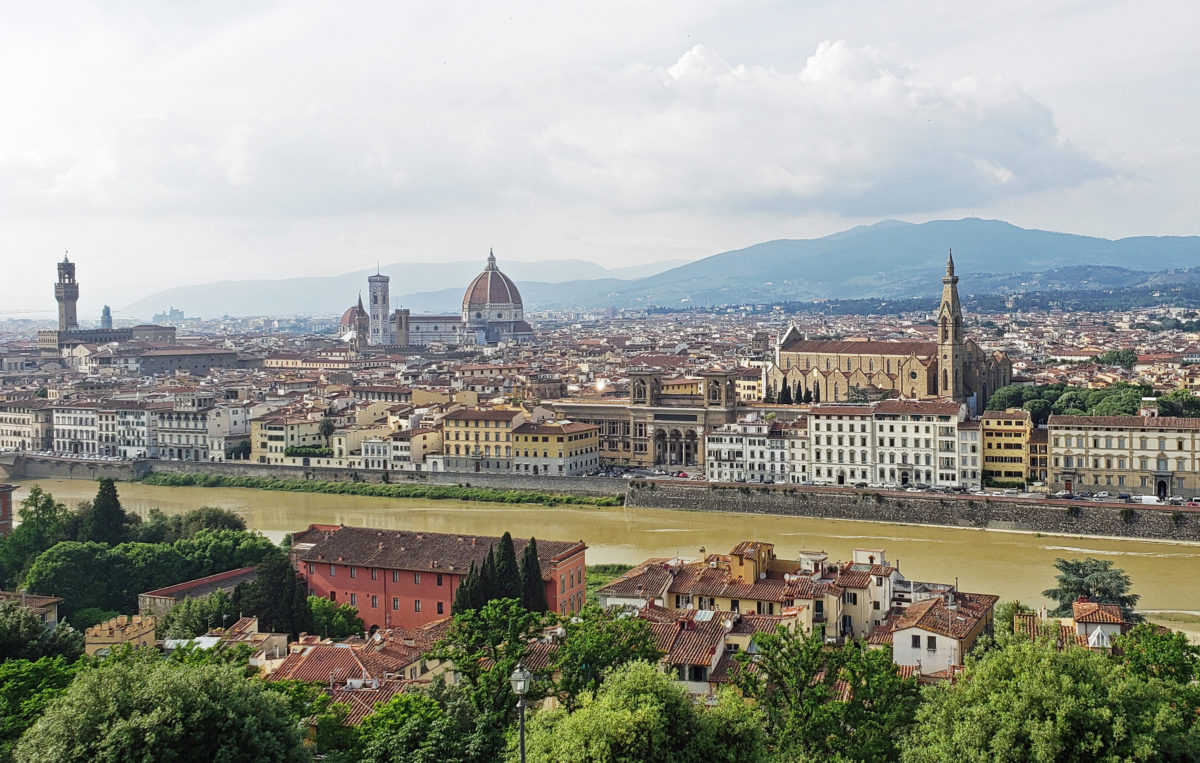In 2018 my wife and I had the great pleasure of visiting Florence, Italy. It was the final leg of our 2018 trip that also included visits to Cinque Terre, Lucca, Pisa, and Siena.

There is probably no other city in the world where history, culture, and art intersect as strongly as they do in Florence. Walking the streets of the old city center, you are walking the same streets that Leonardo da Vinci, Michelangelo, Galileo, the Medicis, and Machiavelli walked. You are literally walking in their footprints. That’s a very powerful and pretty magical connection. Never mind that there are tens of thousands of other visitors walking those same streets.
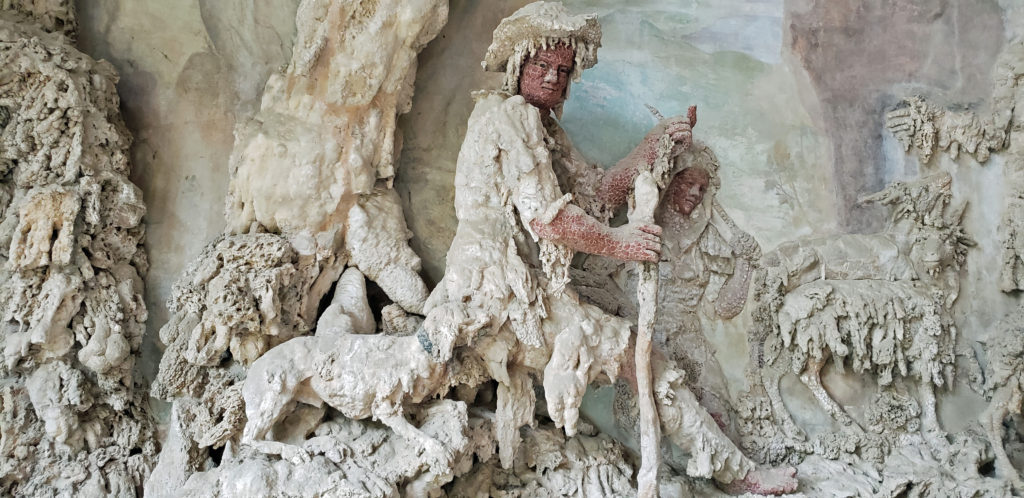
If you an art aficionado, you have a problem here – you simply can’t see everything worth seeing unless you have an unlimited amount of time to spend in Florence. There are dozens of galleries, museums, and palaces, and hundreds, probably thousands, of statues and other significant pieces art scattered around the city. Many of Florence’s churches have impressive art collections, as well. We visited many, but by no means all, of the major galleries in our four days there.


The two most acclaimed art museums in Florence are the Uffizi Gallery and the Galleria dell’ Accademia. The Uffizi has the most extensive collection of Italian renaissance art in existence, and the Accademia is home to Michelangelo’s David. Though very crowded, both are absolute must sees if this is your first visit to Florence.

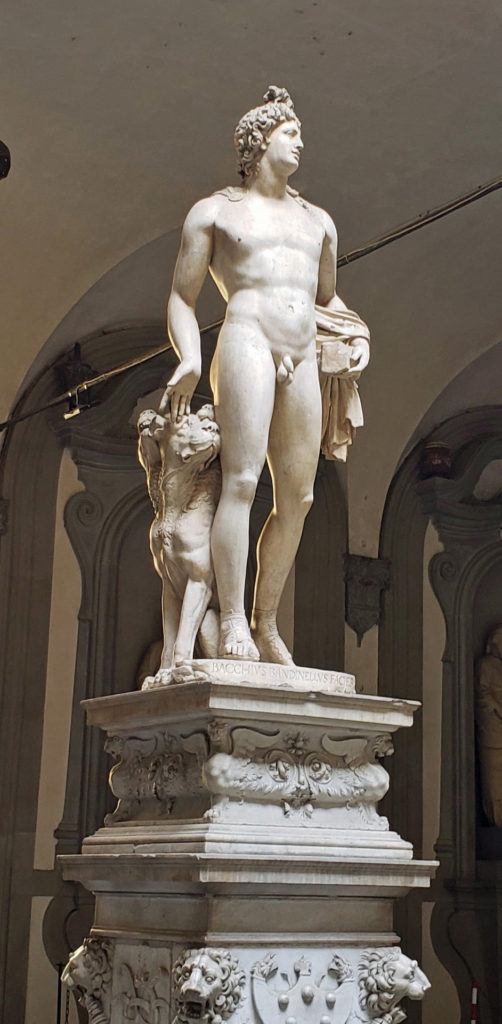
The Duomo Museum is also highly worth visiting, and the Bargello has the best collection of early Florentine sculpture. The Palazzo Medici-Riccardi and the Palazzo Vecchio both also house significant works of Florentine art. The Galileo Science Museum, the Museum of San Marco, and the museums in the Palazzo Pitti are also highly recommended by the guide books. We weren’t able to visit any of those, however.
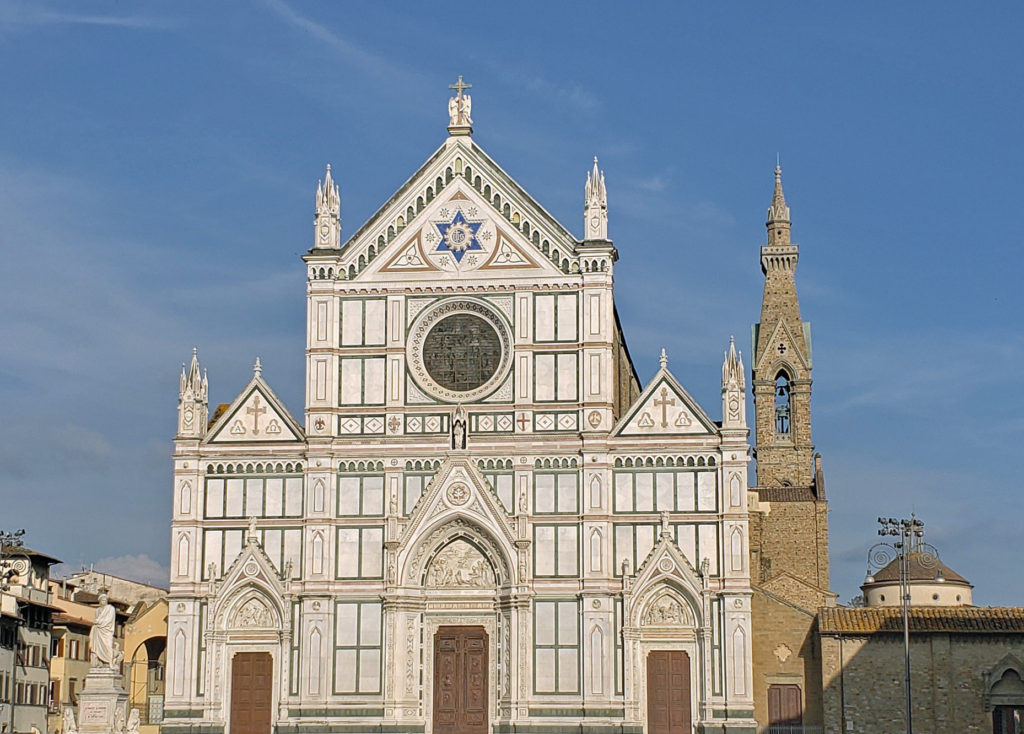
The history and culture of Florence is intimately tied to the Catholic Church, and many of the city’s churches are among the major attractions of Florence, including the Church of Santa Maria Novella, the Santa Croce Church, the Brancacci Chapel, the Medici Chapels, the San Miniato Church, and, of course, the Duomo cathedral (officially the Cattedrale di Santa Maria del Fiore) and the Baptistery (the oldest structure in Florence, built in the eleventh century).
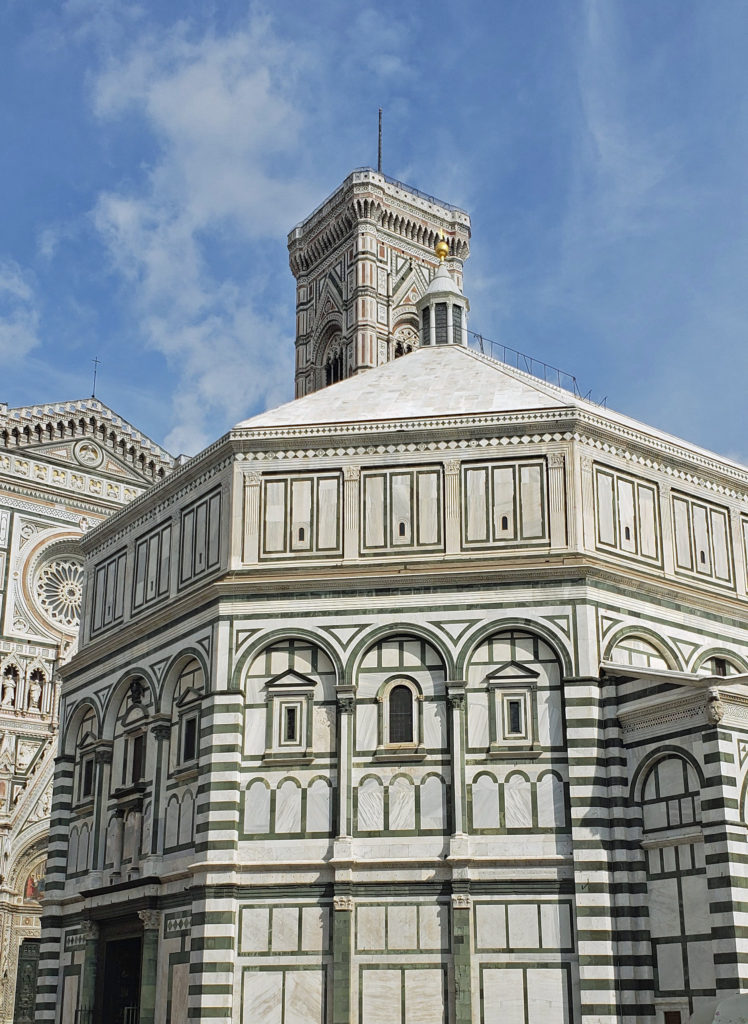
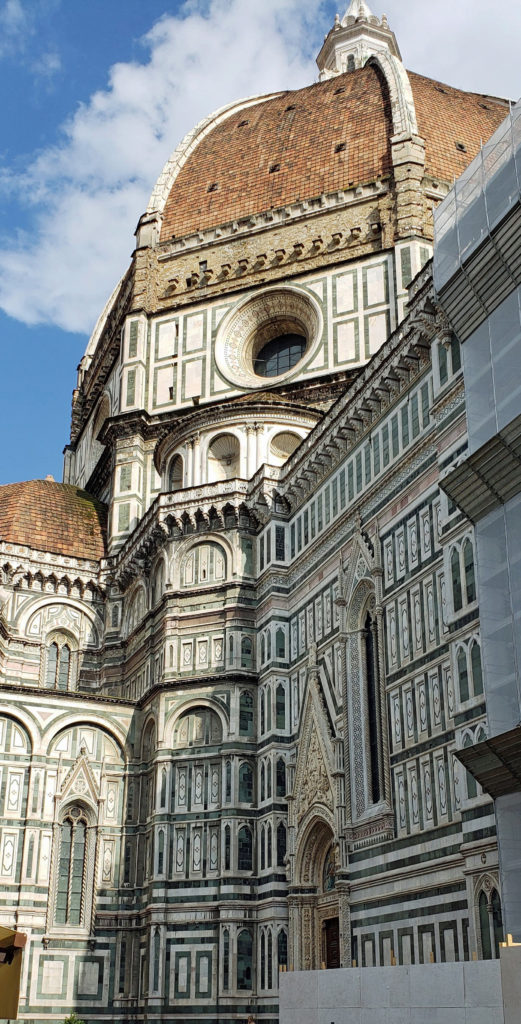
Construction of the cathedral started in 1296, but the nave wasn’t finished until 1420, and the dome wasn’t completed until 1436. (The Lantern that tops the dome wasn’t added until 1472). The dome of the cathedral is by itself one of the wonders of Florence. When the cathedral was designed no one had any idea how to build a dome spanning 150 feet, especially one that began 180 feet off the ground. Nothing like it had been built before. No one knew if it could be built. Filippo Brunelleschi, who both designed and built the dome, had nothing to guide him. He literally had to invent the engineering techniques and much of the equipment needed to construct it as he went. It is still the largest masonry dome in the world. The Florence Inferno website has more information on construction of the dome. There is also a fascinating episode of the PBS series NOVA depicting the building of the dome that I highly recommend. There is a link to that at the end of this post.
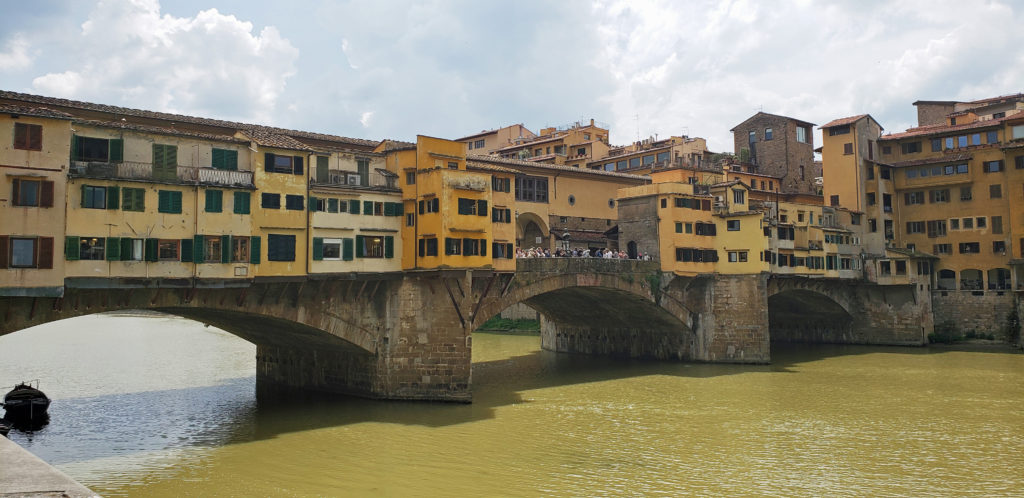
Entrance to the Duomo cathedral is free. Because of that and because the cathedral is one of the most prominent attractions in Florence, the lines are long – many blocks long when we were there. The cathedral opens to the public at 10:00, except Sunday. Mass (which is open to the public) is held at 10:30 on Sunday, and the cathedral opens for public tours at 1:30. A €15 combo ticket gets you into all of the other Duomo attractions, including the Campanile, the Baptistery, the Duomo Museum, and the climb to the top of the dome (which also requires reserving a time in advance).
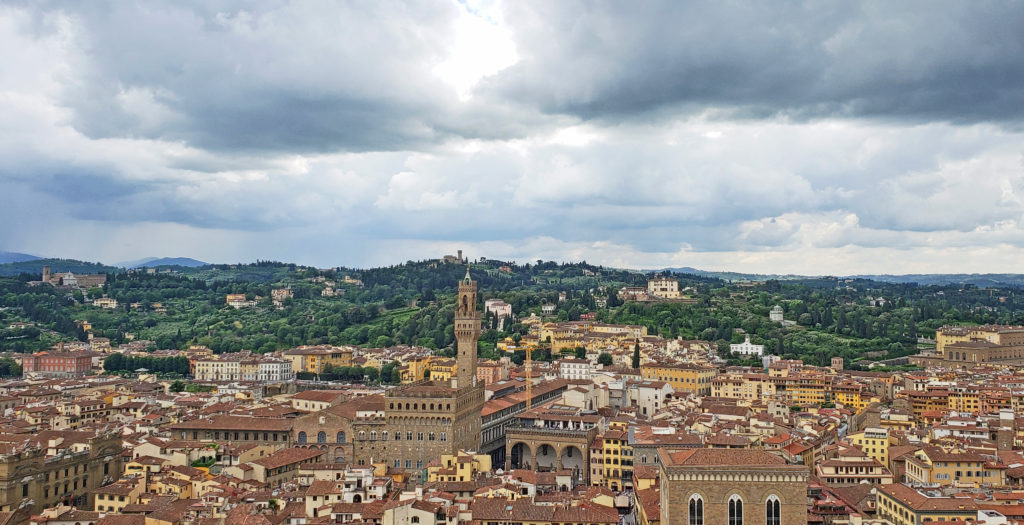
Since we were climbing the dome, we skipped the long line to get into the Duomo cathedral. Climbing the dome does not get you into the main floor of the cathedral (except for a small roped off area as you exit), but does give you a birds eye view looking down on the altar and the 500 foot long nave from halfway up, and gives you an up close view of Vasari’s magnificent painting that covers the dome’s ceiling. And the view of the city from the top of the dome is spectacular, especially if you’re there near sunset, and makes the 463 step climb definitely worth the effort.
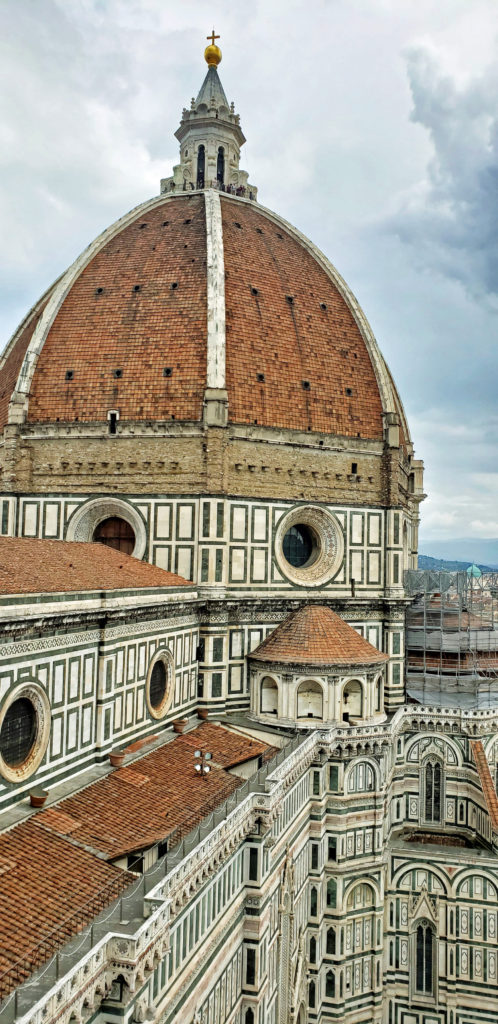
After our dome climb, and a short rest, we climbed the Campanile (bell tower), also known as Giotto’s Tower. While the view of the city is essentially the same as from the cathedral dome, from the Campanile you have a great view of the dome itself. The 414 step climb to the top of the bell tower is slightly less taxing than the climb to the top of the dome (unless you climb them back to back like we did). If you just want a good view of the city, the more sensible option would be to just climb the Campanile and skip the dome, but climbing both is certainly doable for most people.
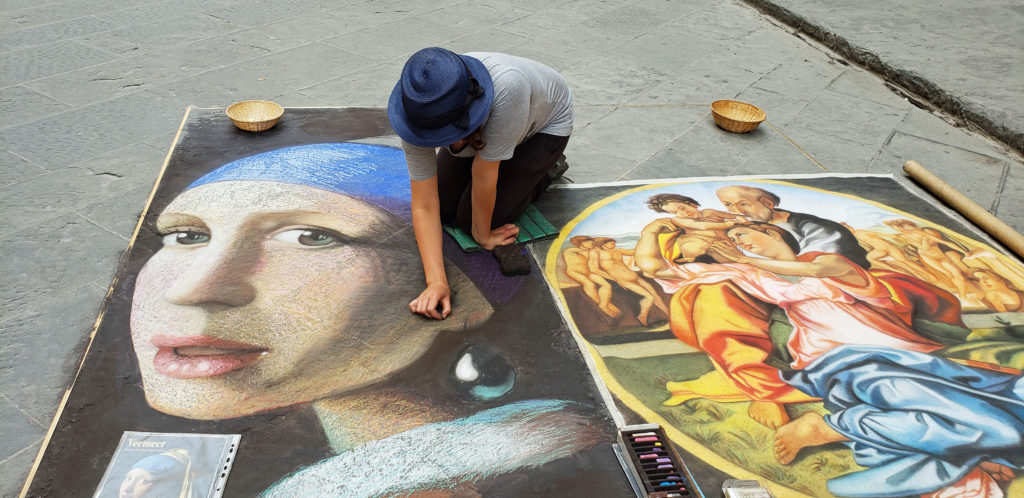
We stayed at an Airbnb rental near the city center, and walked everywhere we went. All of the major attractions of Florence are within easy walking distance of each other. The closer to the center of the city the more expensive hotels and other accommodations tend to be, of course, so staying outside of the center and taking a taxi or bus in makes some sense. (Even if you have a car, I would advise not driving into the city center). Our Airbnb was reasonably affordable and only a ten minute walk to the Duomo, though, so that is also a good option to consider if the cost of accommodations is a concern.
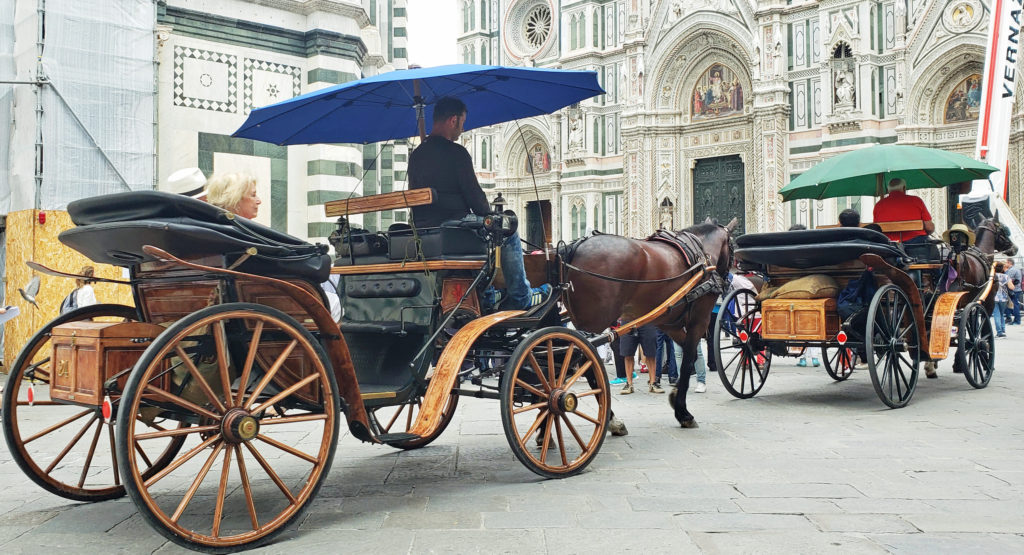

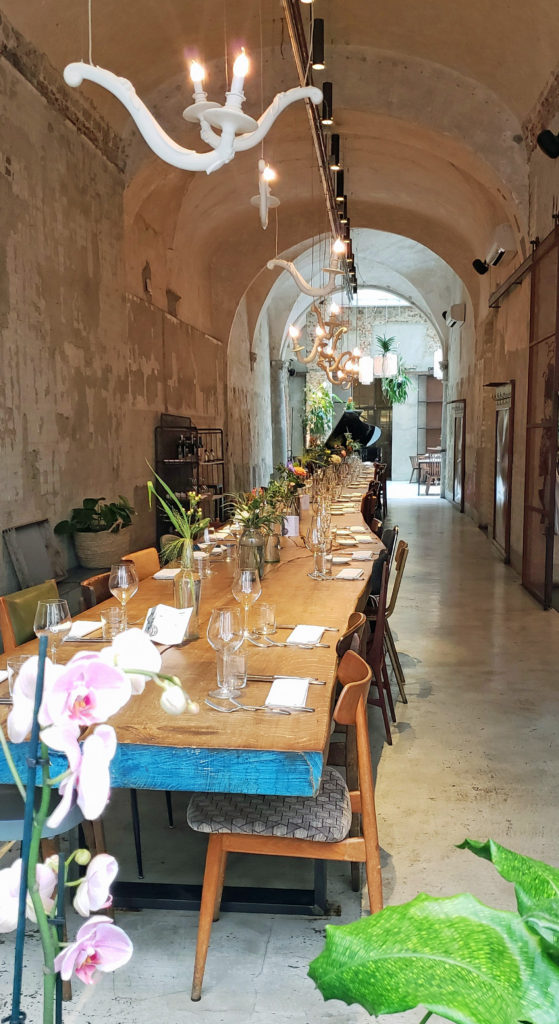
There is just too much to Florence to cover here. If you’re planning a trip, do your homework (Rick Steves’ guide to Florence and Tuscany is a good starting point), pick the sights you have to see, and plan accordingly. But also leave time to explore the city, especially areas away from the Duomo, the Uffizi Gallery and the Ponte Vecchio. Sample the local cuisine (the food was very good at every place we ate, so don’t be a slave to guide book recommendations), drink some wine, and get a feel for the city. Visit the Pitti Palace (closed on Mondays) and the Boboli Gardens in the Oltrarno area south of the river, take in the sunset from the Piazzale Michelangelo (also in the Oltrarno), or just wander at random. You will find interesting, artistic, and historical attractions wherever you go.
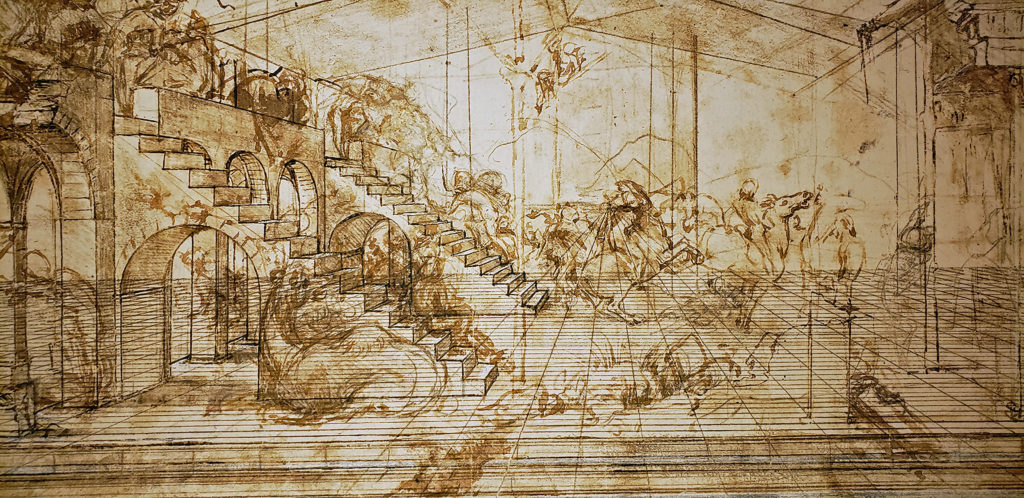

There is simply no other place like Florence. If you are contemplating a trip to Tuscany, Florence has to be at the top of your list of places to visit. And you should spend enough time there to get a real feel for the city. There’s just too much history, too much art, and too much of the soul of Italy there to not experience as much of it as you can.
I don’t know if we will ever return to Tuscany, but there is still much to see if we do, in Siena, Lucca, and Pisa as well as Florence. And the hilltop villages in central Tuscany that we did not make it to on this trip beckon.
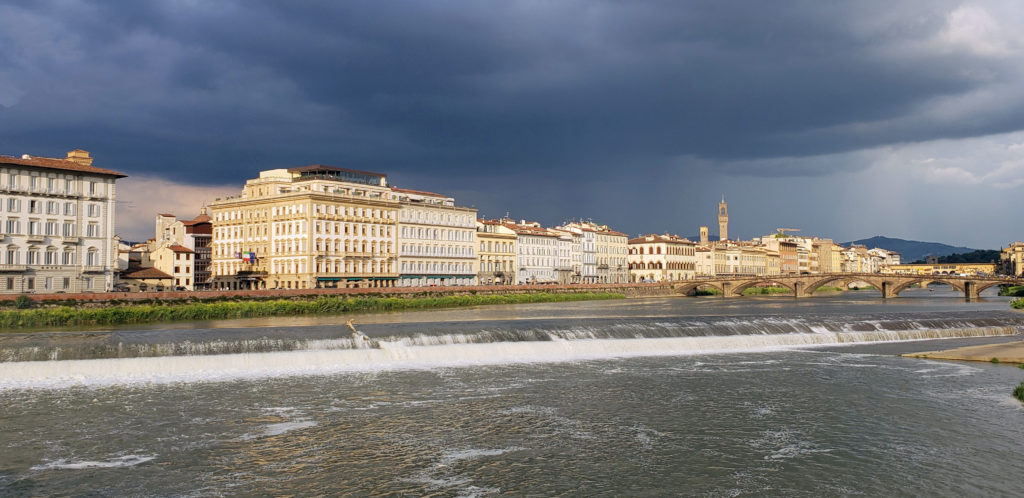
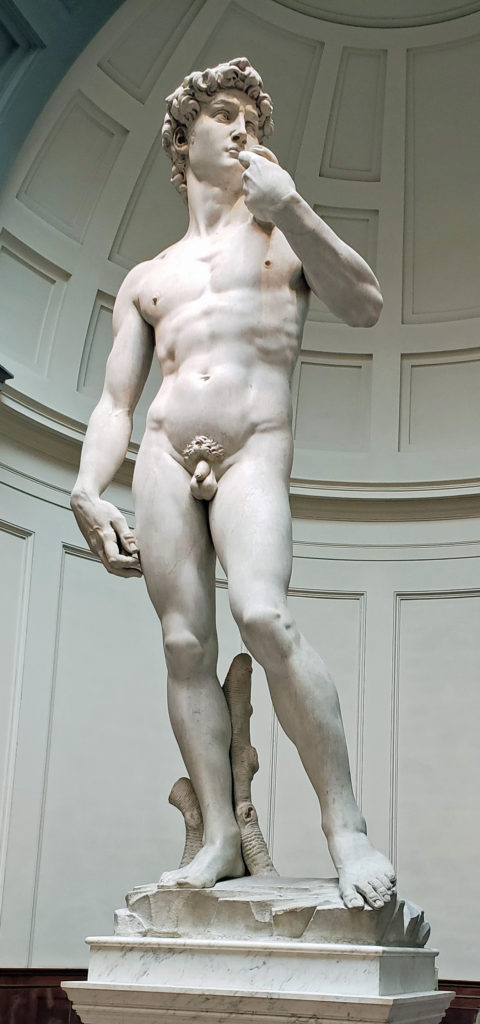
Originally posted 11/4/18 by Alan K. Lee. Updated and re-posted 8/24/20 and 6/20/23.
All photos © Alan K. Lee

